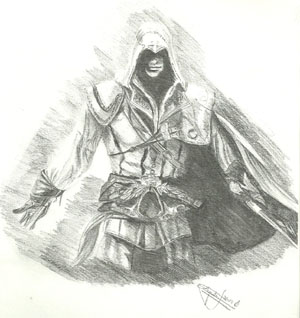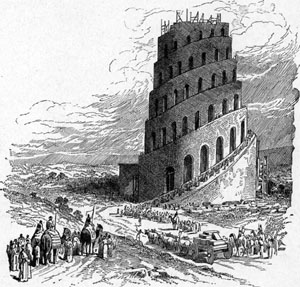 The beautiful abstraction of inflationary hit points is an efficient, streamlined, and (most importantly) fun way of handling combat damage.
The beautiful abstraction of inflationary hit points is an efficient, streamlined, and (most importantly) fun way of handling combat damage.
Once you get outside of combat, however, they do take a toll.
Falling damage is oft-cited, but doesn’t really bug me any more: If your character is capable of punching out a dragon (and they are), the fact that they can jump off a skyscraper doesn’t really seem that implausible. My philosophy is let the demigods be demigods.
But the one tack-on effect that does bug me is the loss of stealth-based play. You can’t just sneak past the guards, because in practice that usually just means that you end up with enemies in front and behind you. And since the system is designed to make it difficult to take out your typical opponent in one hit (because that doesn’t make for a fun combat), it’s impossible to execute a “quiet sweep” (by taking out opponents without raising the alarm). So, in general, your only viable option within the mechanics is to go for a full breach every time. And this is a problem that is typically exacerbated as the PCs gain levels.
(You’d think that having a wider range of weaker opponents would counteract this trend, but in practice it doesn’t because the players don’t have a reliable way of knowing which opponents are weak enough for the “guaranteed take-out”. Since a failed stealth attempt will generally put you in a bad position and the group can usually just overwhelm targets they could successfully take-out during a stealth op, my gameplay experience suggests that they’re rarely willing to take the gamble with the odds stacked so heavily against them. This could be addressed by adding a mechanic that would allow PCs to figure out “how tough is this guy?”.)
Another solution, of course, would be to increase the lethality of the system. The D20 version of Call of Cthulhu, for example, lowered the Massive Damage Threshold to 10. This encourages stealth-focused play from both sides — it makes the PCs vulnerable in open melees and makes it possible for them to take out opponents in a single, stealthy blow.
Of course, in D&D, setting the MDT to 10 would simply turn the game into a big crap shoot of save-or-die. Not much fun. I’ve long been tempted to play around with setting the MDT to a character’s Constitution score + HD in a D20 game just to see what would happen. That might work for an E6 game; although beyond that point the lethality would start creeping back up into save-or-die territory.
But I digress. My point is, using MDT to solve the problem will also impact how combat itself plays out. Which may not actually be desirable. So let me tweak it a little bit and propose something different.
SURPRISE DAMAGE THRESHOLD
Create a “surprise damage threshold”. If a flat-footed character suffers more damage than their surprise damage threshold during the surprise round, they are knocked unconscious.
This rule allows the PCs to dogpile a single sentry or small group to help guarantee that their stealthy behavior pays off. And by requiring the damage to be dealt during the surprise round, you’re eliminating random knock-outs at the start of every fight. (The flat-footed requirement is there to make this strictly about achieving surprise.)
What value should the SDT be set at? That’ll probably require some tweaking and playtesting, but Constitution score + HD might not be a bad place to start. You could also add a Fortitude save like the regular MDT rules require.













